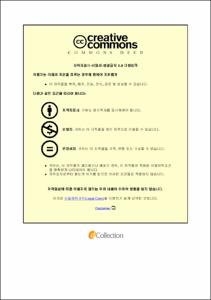참깻묵의 자연발화온도와 활성화 에너지를 통한 화재 및 폭발의 위험성 평가에 관한 연구
- Abstract
- In order to determine the risk of spontaneous ignition of sesame seed oil cake, the spontaneous ignition temperature according to the thickness of the sample container was measured, and through the critical ignition temperature, the apparent activation energy was calculated. In addition, to identify the physical characteristics of sesame seed oil cake, the thermal ignition characteristics of TG-DTA were analyzed, which led to the following conclusions.
(1) The thermogravimetric measurement of sesame seed oil cake showed that the mass was reduced by 0.301 mg when the temperature increased from 27.86 ℃ to 201.50 ℃, and it was reduced by 10.676 mg when the temperature changed from 201.50 ℃ to 429.00 ℃. In addition, from 429.50 ℃ to 900.10 ℃, the mass was reduced by 6.194 mg.
(2) The differential thermal analysis of sesame seed oil cake showed that 5.35 J of heat was generated at the first exothermic peak of 373.55~475.65 ℃, and 1.79 J was generated at the second exothermic peak of 512.91~580.61 ℃.
(3) When the thickness of the sample container was 3 cm, the spontaneous ignition temperature of sesame seed oil cake was 180 ℃, and the non-ignition temperature was 175 ℃. The critical ignition temperature, which is the mean of the ignition temperature and non-ignition temperature, was 177.5 ℃.
(4) When the thickness of the sample container was 5 cm, the spontaneous ignition temperature of sesame seed oil cake was 160 ℃, and the non-ignition temperature was 155 ℃. The critical ignition temperature, which is the mean of the ignition temperature and non-ignition temperature, was 157.5 ℃.
(5) When the thickness of the sample container was 7 cm, the spontaneous ignition temperature of sesame seed oil cake was 145 ℃, and the non-ignition temperature was 140 ℃. The critical ignition temperature, which is the mean of the ignition temperature and non-ignition temperature, was 142.5 ℃.
(6) When the thickness of the sample container was 14 cm, the spontaneous ignition temperature of sesame seed oil cake was 130 ℃, and the non-ignition temperature was 125 ℃. The critical ignition temperature, which is the mean of the ignition temperature and non-ignition temperature, was 127.5 ℃.
(7) In order to predict the spontaneous ignition temperature according to the capacity of the sample container, the critical ignition temperature could be predicted at approximately 42 ℃ when the diameter of the container was 1 m.
(8) When the thickness of the sample container was 3 cm, the time to reach the maximum temperature of 242 ℃ was 3 hours 6 minutes, and when the thickness was 5 cm, it took 10 hours 54 minutes to reach the maximum temperature of 280 ℃. In addition, when the thickness of the sample container was 7 cm, it took 19 hours 23 minutes to reach the maximum temperature of 312 ℃ while it took 49 hours 23 minutes to reach the maximum temperature of 394 ℃ when the thickness was 14 cm. The reason that it took longer to reach the maximum temperature when the container was thicker was because the heat transfer from the surface of the container to the center was more difficult.
(9) The ignition delay time according to the thickness of the container was 2 hours 24 minutes when the thickness was 3 cm and 8 hours 48 minutes when it was 5 cm. In addition, when the thickness was 7 cm, the ignition delay time was 10 hours 30 minutes and when the thickness was 14 cm, it was 13 hours 30 minutes. The reason that the ignition delay time was longer when the container was thicker was also because the heat transfer from the surface of the container to the center was more difficult.
(10) The apparent activation energy of sesame seed oil cake was calculated using the Frank-Kamenetskii parameters and the critical ignition temperature, and 97.10 kJ/mol was obtained.
- Issued Date
- 2021
- Awarded Date
- 2021. 8
- Type
- Dissertation
- Publisher
- 부경대학교
- Affiliation
- 부경대학교 대학원
- Department
- 대학원 소방방재공학협동과정
- Advisor
- 최재욱
- Table Of Contents
- 1. 서론 1
2. 이론적 배경 5
2.1. 자연발화의 종류 5
2.1.1. 산화열 5
2.1.2. 분해열 6
2.1.3. 흡착열 6
2.1.4. 중합열 7
2.1.5. 발효열 7
2.2. 열분석이론 8
2.2.1. 열중량 분석 8
2.2.2. 시차열분석 10
2.3. 열발화 이론 13
2.3.1. Semenov 이론 15
2.3.2. Frank-Kamenetskii 이론 18
2.4. 자연발화 이론 20
2.4.1. 자연발화의 정의 및 메커니즘 20
2.4.2. 자연발화에 영향을 주는 인자 21
2.5. 활성화 에너지 22
3. 자연발화 사고사례 24
3.1. 화재발생 개요 24
3.2. 화재건물 현황 및 주변여건 24
3.3. 기상상황 25
3.4. 발화지점 25
3.4.1. 관계자 진술 25
3.4.2. CCTV 분석 25
3.4.3. 연소진행 상황 28
3.4.4. 발화지점 판정 31
3.5. 화재원인 33
3.6. 화재조사 결과 34
4. 실험장치 및 실험방법 35
4.1. 실험시료 35
4.2. 실험장치 38
4.2.1. 자연발화 38
4.2.2. 시차열중량분석 43
4.3. 실험방법 45
4.3.1. 자연발화온도 45
4.3.2. 시차열중량분석 46
5. 실험결과 및 고찰 47
5.1. 참깻묵의 열중량 분석에 의한 열화학 반응 분석 47
5.2. 참깻묵의 시차열분석법에 의한 상전이 분석 49
5.3. TG-DTA의 비교 51
5.4. 시료를 담은 용기의 두께에 의한 자연발화온도 53
5.4.1. 용기의 두께가 3 cm의 경우 53
5.4.2. 용기의 두께가 5 cm의 경우 56
5.4.3. 용기의 두께가 7 cm의 경우 59
5.4.4. 용기의 두께가 14 cm의 경우 62
5.4.5. 시료 저장량에 따른 발화온도 예측 65
5.5. 시료용기의 두께에 따른 최고온도 도달시간 65
5.6. 시료용기의 두께에 따른 발화지연시간 67
5.7. 참깻묵의 겉보기 활성화 에너지 69
6. 결 론 73
Nomenclature 76
Greek Letters 77
참고 문헌 78
Abstract 82
- Degree
- Doctor
- Files in This Item:
-
-
Download
 참깻묵의 자연발화온도와 활성화 에너지를 통한 화재 및 폭발의 위험성 평가에 관한 연구.pdf
기타 데이터 / 1.93 MB / Adobe PDF
참깻묵의 자연발화온도와 활성화 에너지를 통한 화재 및 폭발의 위험성 평가에 관한 연구.pdf
기타 데이터 / 1.93 MB / Adobe PDF
-
Items in Repository are protected by copyright, with all rights reserved, unless otherwise indicated.